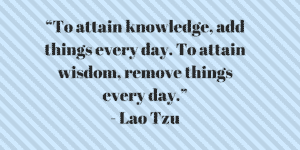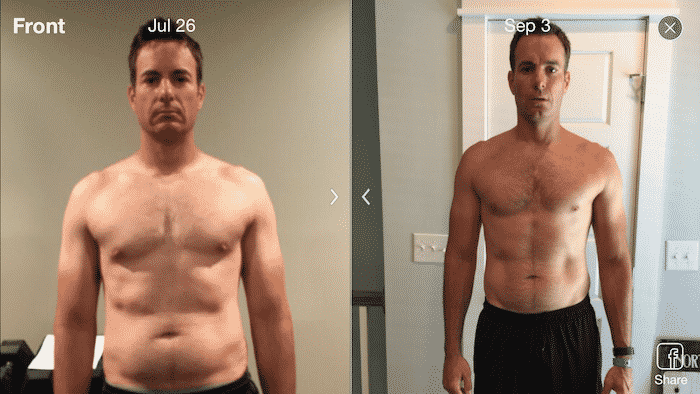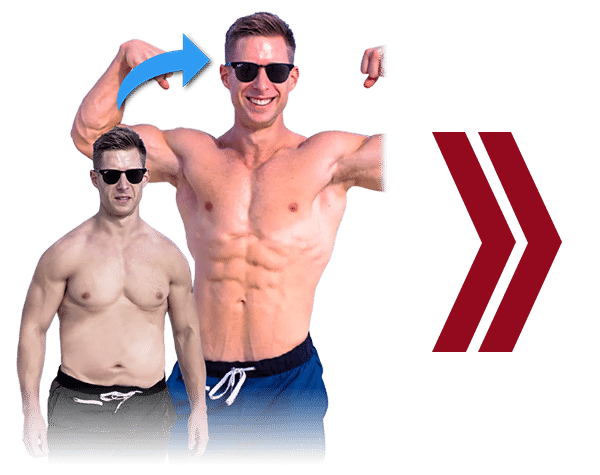Should You Workout Every Day?
September 13, 2016
Should you workout every day? Training every day must be the best way of getting the lean, athletic body you’re after.
You’ll lose fat and build muscle. Guaranteed!
After all, a 22-year-old personal trainer said so on Facebook. And he’s got the selfies to back it up.
It worked for him, so it will work for you. Whether it’s squatting every day or doing a body-part split, all you need to do is set up a seven-day workout routine. And your fitness dreams will become reality.
Sound too good to be true? Like most overly simple-minded fitness ideas, it probably is.
P.S.Get your free eBook 25 Expert Tips to Master Muscle Growth here.
THE SAD TRUTH
It would be great to train every day.
To have the perfect program. And the perfect exercise selection.
After all, training more often leads to you burning more fat, building more strength, and building more lean muscle.
Every program is perfect. Until it isn’t. Let me explain.
For every sexy method or new workout that promises big results, there is another 10,000 people who start a program and stop.
And then hop to the next sexy program, for years on end.
While the promotional headlines might scream:
Shredded Abs In Six Days!!!
The truth is far different. There is no perfect program.
The best program is one you’ll do consistently, with maximum intensity and laser-like focus.
In this article we’ll cover:
- The Essentials of Training. Without these, your efforts will be futile.
- The Fear of Missing Out. It’s a terrible mindset that leads to failure.
- Minimalism. Why doing less stuff better is the key to building your best body.
Here’s how to read this article.
If you’re curious about how to get better results in less time: skim the article. Pick the headlines most interesting to you. Then, look at the community on the bottom of the page.
If you want to build muscle and look better naked:
Pay attention to what every program needs. Note the advice for your training at the end.
If you’re a coach:
Pay special attention to the fear of missing out and take notes on how you can use this to help your clients.
HOW IT ALL BEGAN
It all began with a phone call. I wasn’t taking notes, but it went down something like this.
“Hey, Eric. I’m struggling with my workouts. I have a great plan prescribed by the trainer at my gym. But I just can’t train six days a week. It doesn’t fit into my schedule. One week, I miss legs. The next week, I skip back.”
At that point, I was about to give up. What’s the point of a great “program” if it doesn’t happen?
Like a puzzle, an effective workout program has many component parts. Every workout is more than a collection of exercises– it’s a structured plan designed to progressively stress your body into growth. If one piece is missing, it’s incomplete and potentially, ineffective.
So after a few seconds, I replied something like this: “What you need is a plan that fits your busy schedule and improves your life, rather than consumes it. I call it minimalist training.”
Minimalist Training
Minimalist training is based on finding the minimum effective dose. In other words:
- What’s the least amount of training you can do to build strength and progress?
- What number of calories will help you lose fat or build muscle?
- How many days do you need to lift to make sweet, sweet biceps gains?
Realistic Goals
Goals come first. Start by deciding on your number one fitness goal.
Not a Goal: “I want to lose 10 pounds and add 50 pounds to my deadlift” doesn’t work. That’s two goals. Focus on one and only one goal. Look for the minimum effective dose.
Goal: “I want to build ten pounds of muscle over the next 90 days.”
Next, decide what’s essential to gaining ten pounds of muscle in 90 days.
P.S.Get your free eBook 25 Expert Tips to Master Muscle Growth here.
Execution
How do you need to train? Here’s an example. Focus primarily on heavy lifting to maximize muscle fiber recruitment and build strength. Then, sprinkle in volume and a little pump work to get your biceps growin’ volume. And you love biceps. Oh, biceps. So, you choose:
- Squats over leg curls
- Bench presses over flyes
- Supinated grip bent over rows instead of machine rows
- Occasional biceps curls
How often will you train? We know six days wasn’t working. Instead, we’ll use a habit-based approach.
Use a technique I picked up from my friends and mentors at Precision Nutrition: the one to ten scale.
On a scale of one to ten….
…How sure are you that you’ll be able to lift five days per week? Four days per week? Three days per week?
If three days a week got ten out of ten, and other days got less than nine, three days a week is the way to go.
So we’ll train three days per week using total body workouts.
How do you know what you need to eat? Calories to promote growth with at least 1 gram of protein per pound of bodyweight is the answer. We’ll use body weight in pounds x 16 as a starting point for calories.
160 lbs x 16= 2560 calories and 160g of protein
Will a simple approach like this work?
Yes.
Chasing two goals keeps you from achieving either. And applying too much fitness information to any workout clouds what’s important: getting stronger and using enough volume for growth.
Remember: You can anything, but not everything. You must be selective.
Rather than half-assing sets, you’ll focus on building your body.
You’ll approach each set with the focus of a hawk, ready to make the most of your limited opportunity. You’ll crush each rep. Each set.
Sure, you’ll be doing less, but it will be better. And better is what drives progress.
UNDERSTAND THE FEAR OF MISSING OUT
Maybe you read every fitness magazine, book, and blog possible.
Figuratively speaking, you eat up every bit of information.
Maybe you’re pretty damn smart, but your body hasn’t changed as much as you’d like.
Maybe this has left you overwhelmed, frustrated, and confused.

This is the fear of missing out. You want your goal so badly that every bit of knowledge needs to fit into your routine.
On top of everything, you added last week! Until next week, when the next “Hercules Body” workout comes out.
PUTTING IT ALTOGETHER
It wasn’t until I simplified my training that I started seeing great results. My clients have found the same thing. They’re stunned at how “simple” a workout appears, yet floored by the results. They often finish training in less time than previous workouts, get stronger faster, and look better naked.
A minimalist approach takes you from riding off madly in all directions to going all in on what matters most.
Occlusion training, slide boards, tempo training and the hottest eastern European squat program are all great. But the exercises, methods, and progressions that worked best years ago still work best today.
Focus on training balance, progressive overload, training consistency, and training quality.
Training Balance: Train muscle groups and movements evenly for balanced development. Specialization programs notwithstanding, if you follow a body-part split and miss a day every week, your training is NOT balanced.
The body moves as an integrated unit in sport and life. Your training should reflect this even if your primary goal is to look good naked and feel comfortable with your shirt off at the beach.
Squat: goblet squat, back squat,
Hinge: deadlift/ any Olympic lift
Lunge: lunge, split squat
Carry: farmers walk, one arm farmers walk, carrying friend home from the bar
Press: (vertical) push press, military press(horizontal) bench press, dumbbell bench press, push-up
Pull: (vertical) chin-up, pull-down(horizontal) dumbbell one-arm row, inverted row
Progressive Overload: You must overload your body’s current fitness level. Lift five pounds more this week than last week. Drop your rest periods by 15 seconds. Add one rep at the end of your set. Serious work must be done. If you’re not adding weight to the bar, reps to your set, or shortening your rest, then your body won’t grow. Don’t make it complicated. Get it, put down your phone, and get a little bit better every day.
Training Consistency: Again, a workout program that doesn’t fit your schedule is a program that won’t be done consistently. Without consistency, you won’t get results. So consistency above all else, even if you can train only twice per week. Stopping training completely is the worst mistake you can make. Slammed at work this month? Reduce your workouts from five days a week to three. Or even two or one. But don’t stop.
P.S.Get your free eBook 25 Expert Tips to Master Muscle Growth here.

Workout Quality: You’ll be amazed what happens when you stop thinking about doing more workouts and focus instead on the quality of each rep, set, and workout. Your achy knee or twingy shoulder will fade into oblivion. Your strength will skyrocket as your nervous system (finally) recovers. Your shirt will fit tighter around your shoulders and chest, but somehow looser around your waist. Own each exercise, don’t let the faux idea of winning a 20-minute WOD disrupt your progress.
THE TAKEAWAY
Do less, but do it better.
This isn’t a quick tip or random tactic. It’s something far more important: a mindset to apply to all facets of life. In the gym, you don’t need to “isolate” every muscle group and choose one body part for every day of the week.
Simplify.
You need progressive overload on a few exercises.
You need to train consistently.
You need to train with focus and intensity.
The rest is fine and wonderful. But when all else fails:
Simplify.
A final note. Are you part of our private Facebook group Community?
No?
Click here to join us. It’s free. And will help you look better naked 🙂
Our community is focused on simplifying fitness so you build your strongest, leanest, and most athletic body…without all the information overload.










That was one of the best and reasonable articles I have ever read, well done!!
Thank you, Joe!
Biggest one for me is consistency, which required that I dial back a little bit so that I can make it to the gym every time – no missing workouts from being too sore from the last one! I like the emphasis on quality as well.
What I’m working on lately is bringing the intensity with every rep. My mind wanders so fast!
Hell yes, Tyler! Attack each rep, maximize your time, and get out of the gym.
Good point about not throwing in the towel for a whole week. If you miss one day, it’s not the end of the world. Just pick up where you left off.
Just the article I needed. Getting ready to get back into after an injury followed up by extended time off from work to take care of family matters.
I was starting to get paralysis by analysis on what to do and where to get started.
The six exercise approach as a complex looks like a good place to start.
Thanks.
Thank you, George. Happy to help. Let me know if you have other questions.
-Eric